The Three Best Beer Tap Systems

June 3, 2021
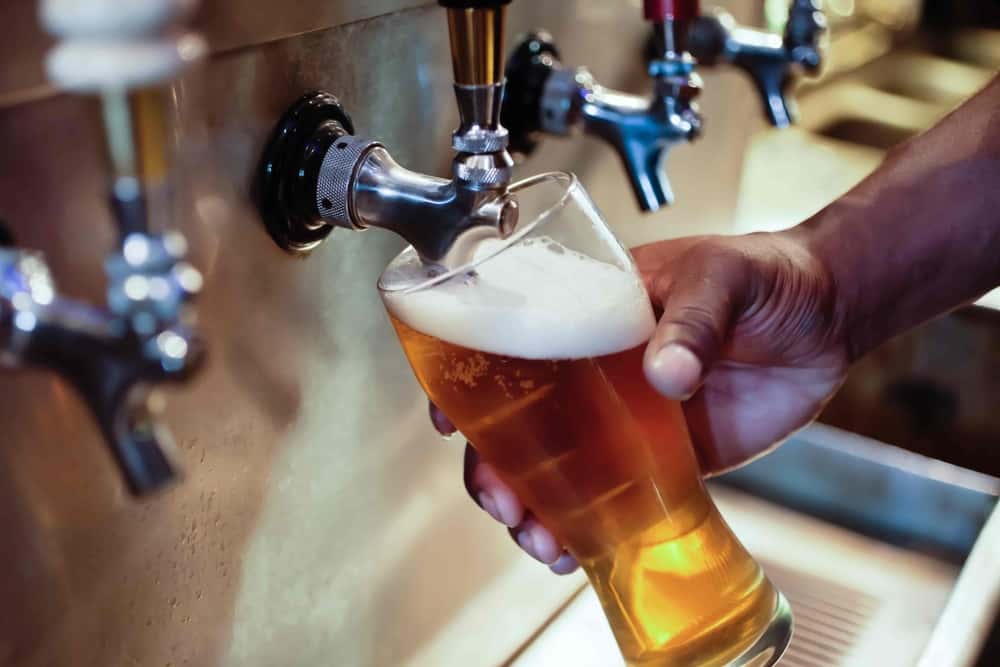
Updated: 2/3/22
I’m sure I’m not alone in that when I’m out for a beer at a bar or brewery, I want something on draft. It’s a special experience to watch a beer poured with a perfect head then slid across the bar to my grasp. This feeling is why many people open bars and breweries in the first place -- along with the love for the beer industry and craft beer.
In order to make the right decision for how to best serve up a frosty one at your venue, you have to know the pros and cons of different tap systems.
Whether you’re looking to install a totally new system, or upgrade your existing taps, there are a few options that range in monetary and spacial cost. The three systems we’ll be diving into are: the kegerator, direct draw, and long draw tap systems.
What We’ll Cover in This Piece:
The Kegerator
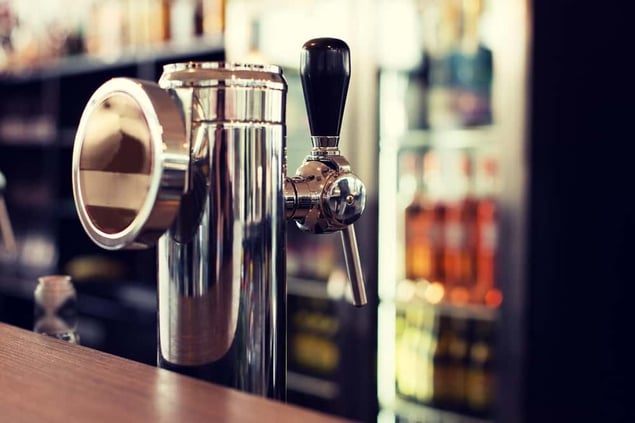
Least Expensive Beer Tap System
The least expensive and most easily customizable tap system is the kegerator. On the lower end, a single faucet, single keg kegerator runs about $600, while an eight-tap prefabbed system will hit its highest price point around $8,000.
The benefits of kegerator systems are that they’re easy to install, operate, and maintain. So there isn’t the added cost of hiring out routine maintenance, though it is important to consider the time commitment of doing that maintenance yourself.
If you’re looking to create a customized kegerator system, you’ll spend $99 for a single tap tower and up to $2,000 for a tower with 5 taps or more. The kegerator itself, plus the refrigeration unit without all the bells and whistles for actually serving beer, can cost from $600 to $5,500. Couplers can cost between $30 to $80 a piece, depending on the style, and regulators are similarly priced between $50 to $100. Of course, every system needs CO2, which will depend on the current market price. All of that is to say, this is the most DIY-friendly option, even if you buy a prefabbed system and install it into the bar yourself, probably with a friend.
While there are lots of positives with the kegerator, the drawbacks can be limiting if you’re looking to scale. Kegerators take up a lot of space and are limited in the number of lines/taps you can have. That limitation is based on the space available inside a particular kegerator. Rather than a half barrel keg, these will likely hold sixtels or pony kegs, so they need to be changed more often. Additionally, these systems often look less professional than direct draw and long draw tap systems.
Total Estimated Cost: $2,500 for 4 Taps
Direct Draw System
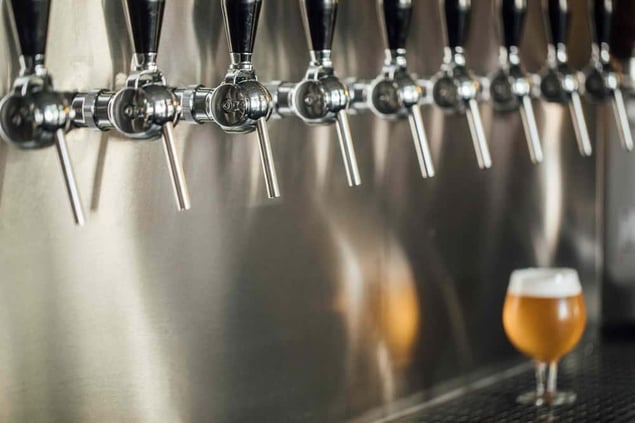
Middle of the Road Beer Tap System
The direct draw system not only looks professional, but running and backup kegs in the same place. With a direct draw system, you’re looking at spending about $1,000 per line, which doesn’t include the price for installation. A tap tower alone can range from $1,000 to $2,500 for an average number of taps (think 7 to 12). And with each additional faucet, the price goes up. A drain tray is also necessary, so you’re looking at another $200 to $800, depending on how fancy you want to get. Before you’ve hired a crew to install, you’re already spending $7,000 to $13,000 on hardware, with the loaded expectation you have a cooler sharing a wall with the bar.
However, while you’re spending more money up front, these systems have a short setup time and take less time away from staff to shift kegs every time they kick. Additionally, you can fit more into a smaller space. When comparing direct draw and long draw systems, there are quite a few similarities in regards to hardware, though the direct draw system is typically less expensive.
Other than cost when compared to a kegerator, the big limitation with this system is that lines are directly run from the kegs in the cooler to the taps in the bar, from the other side of the wall -- meaning that your walk-in cooler has to share a wall with your tap system, or be extremely close to it. Given that the lines are short, an air-cooled system works well, without the addition of a glycol line that’s needed in the next-mentioned long draw system.
Total Estimated Cost: $16,000 to $20,000 for 16 Taps
Long Draw System
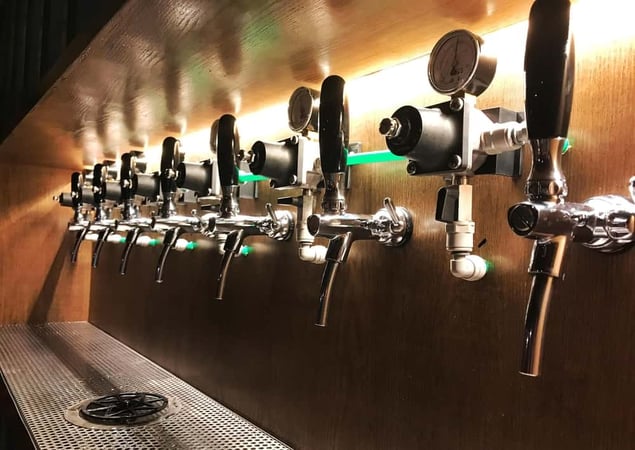
The Most Expensive Beer Tap System
When your cold storage doesn’t share a wall with your taps, it makes sense to go with a long draw system. Though initial and maintenance costs are the highest, there are also terrific upsides. The long draw system uses all the same hardware as the direct draw, with the addition of glycol and lines to run it.
The long draw will typically run $1,200 per tap, which doesn't account for the cost of the glycol for the lines or the additional charges for line length. With a long draw, your kegs are stored remotely from the bar and run along glycol lines to the taps; the glycol keeps your beer cool throughout the journey. The longer the distance from the cooler to the tap handle, the more the lines will cost at the outset, at a cost of roughly $12 per 60 inches of hose and then $15 per foot for trunk line, which holds everything together.
It’s worth mentioning that glycol can also be used in a direct draw system but is not as necessary because the beer doesn’t travel as far, so the temperature won’t vary much from keg to glass. With the long draw, if you don’t have a glycol line, your beer won’t cool properly and you’ll end up with a lot of foam, losing you beer and profit.
To keep your systems in good shape and delivering the best product, you’ll also require a combination of in-house expertise to keep up with the day-to-day use and routine professional maintenance. Though these may seem like hidden costs, they prove themselves worthy in every perfect pour.
Total Estimated Cost: $16,500 for 12 Taps
Which Tap System Should You Buy?
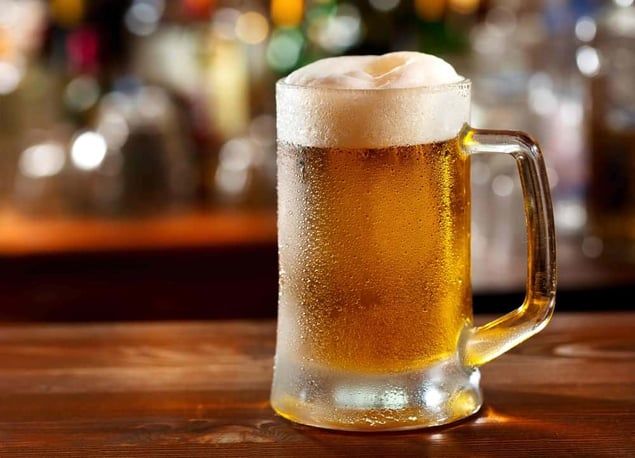
We’ve given our best guess for the prices above for each option but your costs may vary depending on a number of different factors. For example, a used tap system hardware will cost far less, and a system with 24 taps is going to have a much higher price tag than one with 12.
Whatever system you’re looking to install, it’s important to take into account the small costs associated with each. The kegerators and long draws can essentially work for any location, but you’ll need to weigh the pros and cons of each. The direct draw will only work for select locations where the cold storage lines up to the bar just right.
If none of these options seem to work for you, there are companies that customize systems perfectly to your needs or can lead you down the right path. For more information, check out Brewskis Beverage Service or Micro Matic’s Design Center.
If you want to take the DIY road, or go with a more traditional system, you now have the knowledge to get started and know what questions to ask yourself and your installer.
Unlock Your Beer and Beverage Potential!
More than 20,000 venues around the world use Untappd for Business for menus, analytics, and promotion of their venue.
Schedule a demo or start your 7 day free trial – no credit card required.
